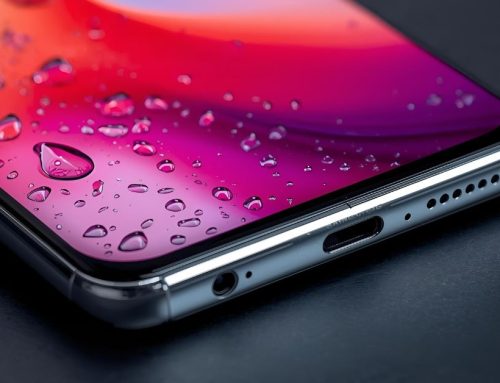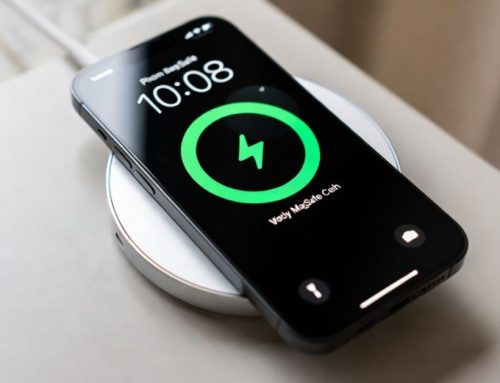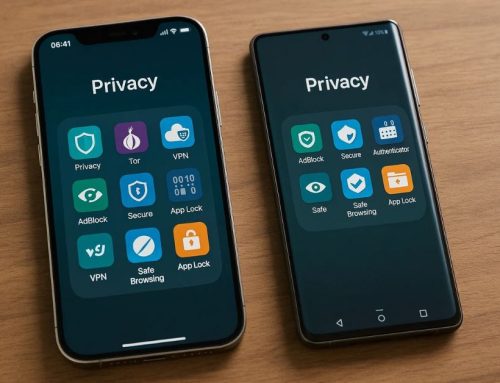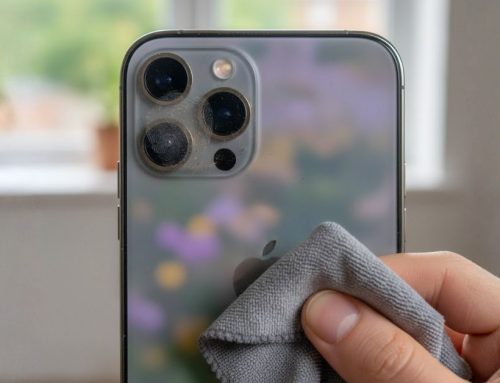To address unresponsive touchscreen on Samsung Galaxy S21, start by restarting your device and ensuring your software is up to date. If the problem continues, perform a cache partition wipe to clear temporary system data. Enabling the touch sensitivity feature can also improve finger detection, especially if you use a screen protector. Additionally, remove any accessories and clean your screen thoroughly with a soft, lint-free cloth to eliminate dirt or oils that may affect touch responsiveness.
Avoid exposing your device to moisture and extreme temperatures, as these environmental factors can interfere with touchscreen performance. If these steps do not resolve the unresponsive touchscreen on your Samsung Galaxy S21, more advanced troubleshooting or professional assistance may be necessary. There is more to learn about maintaining and improving the responsiveness of your Galaxy S21’s touchscreen for a smooth user experience.
Key Takeaways
- Restart your Galaxy S21 and install software updates to refresh screen functionality and resolve touch issues.
- Perform a cache partition wipe to clear temporary system data causing touchscreen unresponsiveness.
- Enable the touch sensitivity feature to enhance finger tap detection, especially when using screen protectors.
- Remove accessories and clean the screen with a soft, lint-free cloth to improve touch responsiveness.
- Avoid environmental factors like moisture and extreme temperatures that can interfere with touch sensor performance.
Restart and Update Device
Experiencing an unresponsive touchscreen on Samsung Galaxy S21 can often be resolved with a simple restart. Rebooting your device helps refresh system processes, clear temporary glitches, and restore touchscreen responsiveness. It’s a quick and effective first step that frequently resolves minor touch issues.
If restarting doesn’t help, check for any available software updates. Keeping your Galaxy S21 up to date is essential for maintaining a responsive screen. Updates often include bug fixes and improvements to touch sensitivity, which can address issues related to an unresponsive touchscreen on Samsung Galaxy S21. Regular updates also ensure your device stays compatible with the latest apps and features, enhancing overall performance.
Perform Cache Partition Wipe
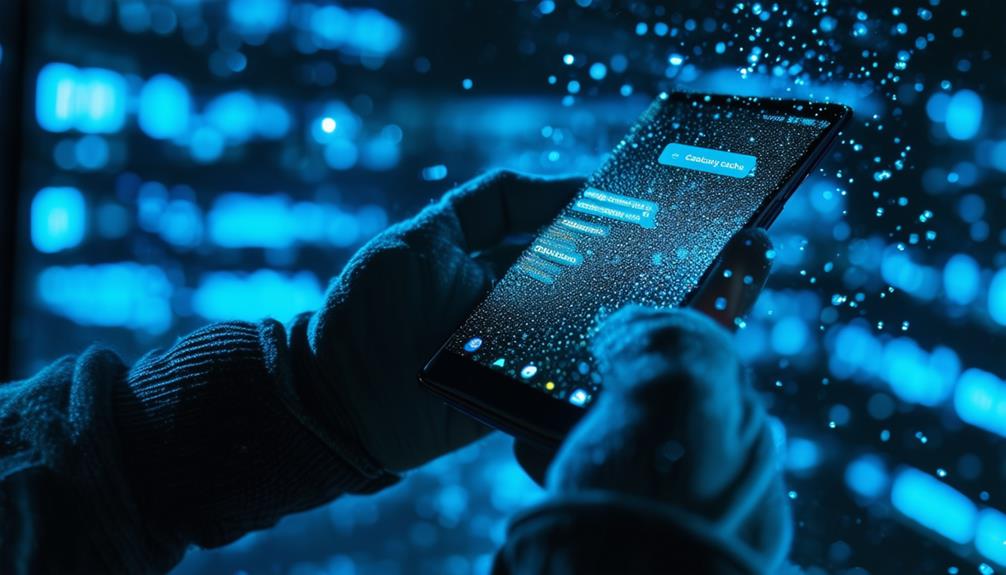
If you’re still dealing with an unresponsive touchscreen on Samsung Galaxy S21 after restarting and updating your device, performing a cache partition wipe can be an effective next step. This process helps clear out temporary system files that may be interfering with your touchscreen’s responsiveness and overall system performance.
To perform the wipe, access the recovery menu on your Galaxy S21 and select the option to clear the cache partition. This will not delete any of your personal data but can significantly improve system stability and resolve issues related to an unresponsive touchscreen on Samsung Galaxy S21. It’s a safe and recommended solution many users have successfully used to fix persistent touch problems.
Enable Touch Sensitivity Feature
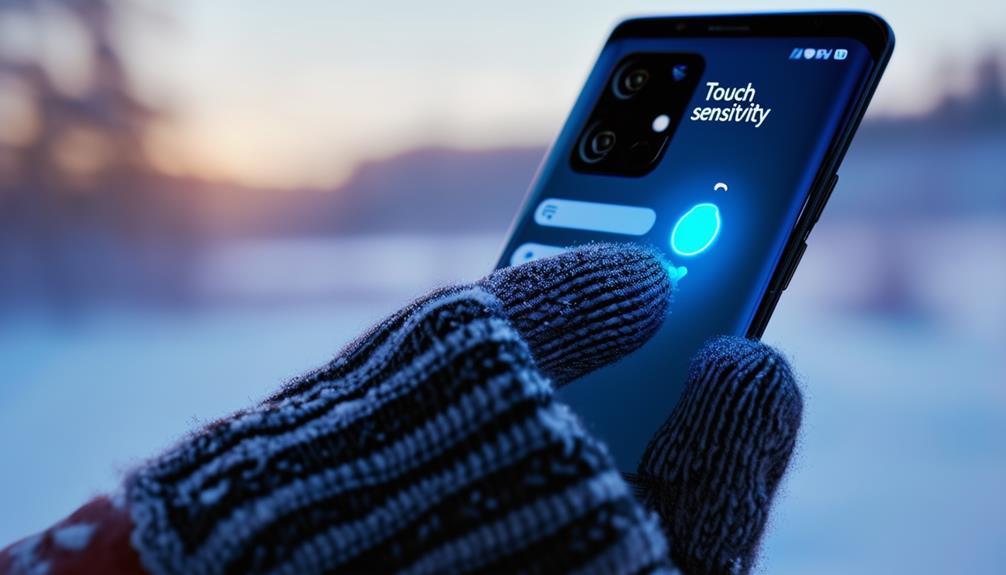
If you’re still facing an unresponsive touchscreen on Samsung Galaxy S21, enabling the touch sensitivity feature could help. This built-in setting is especially useful if you’re using a screen protector, as it increases the screen’s responsiveness to finger taps and swipes.
To activate it, go to Settings > Display, then toggle on Touch Sensitivity. This adjustment can significantly improve touch accuracy and reduce lag, helping to restore full functionality to your device. For users whose unresponsive touchscreen on Samsung Galaxy S21 is caused by screen protectors, this quick fix often makes a noticeable difference.
Remove Accessories and Clean Screen
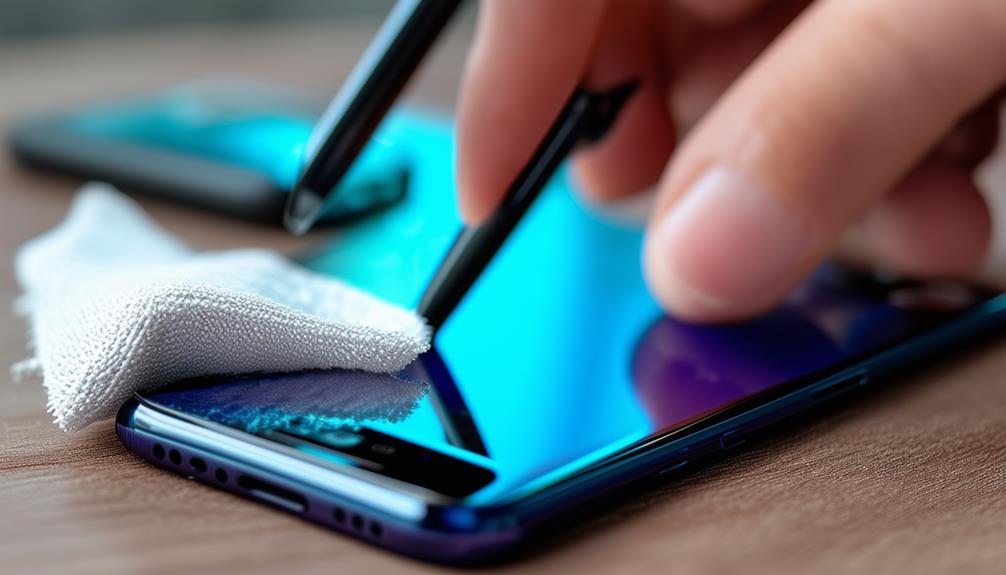
Let’s address a straightforward yet effective solution: removing accessories and giving your screen a thorough clean. As a member of the Galaxy S21 family, we want you to get the most out of your device. Start by taking off your screen protector and case. Don’t worry; it’s not permanent. This direct contact with your screen can significantly enhance touch sensitivity.
Next, use a soft, lint-free cloth to gently wipe away any dust or debris. You’d be surprised at how much this can improve responsiveness. Remember, a clean screen is an efficient screen! Also, ensure your hands are dry when using your phone, as moisture can interfere with touch sensors. Lastly, if you’re wearing gloves, try taking them off, as they can reduce touch accuracy.
Avoid Environmental Factors
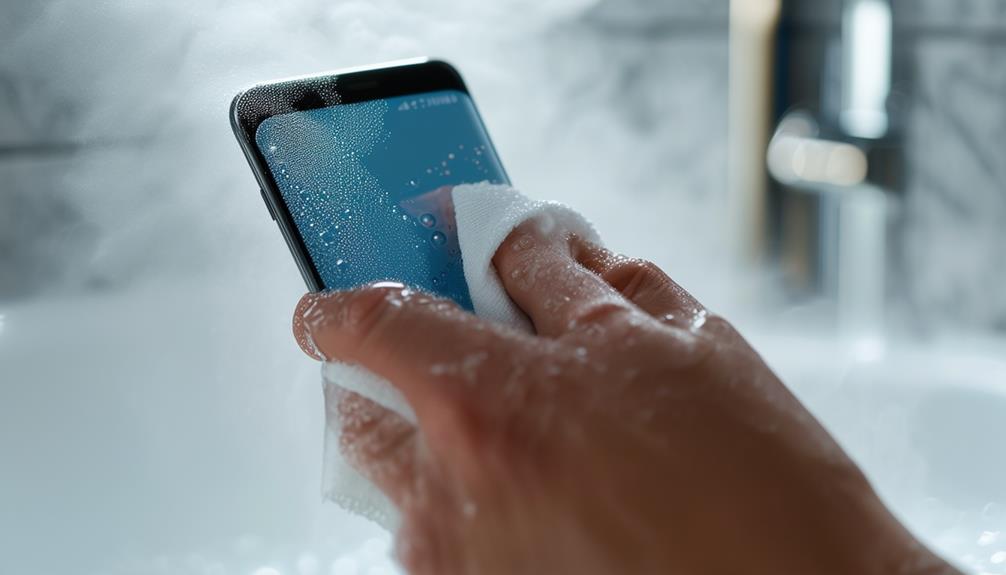
Environmental conditions can play a major role in causing an unresponsive touchscreen on Samsung Galaxy S21 devices. Moisture, in particular, is a common culprit—water droplets can interfere with the touch sensors, leading to lag or inconsistent screen response. Always keep your screen dry, especially when using your phone near water or in the rain.
Cold temperatures can also affect screen performance. Gloves that aren’t touchscreen-compatible may hinder your interaction with the screen, increasing the chances of an unresponsive touchscreen on Samsung Galaxy S21. Use touchscreen gloves or switch to voice commands when needed. Additionally, avoid exposing your screen to sharp objects that could cause physical damage and impair responsiveness. By managing these environmental factors, you’ll maintain smoother performance and better screen reliability over time.
Seek Professional Assistance
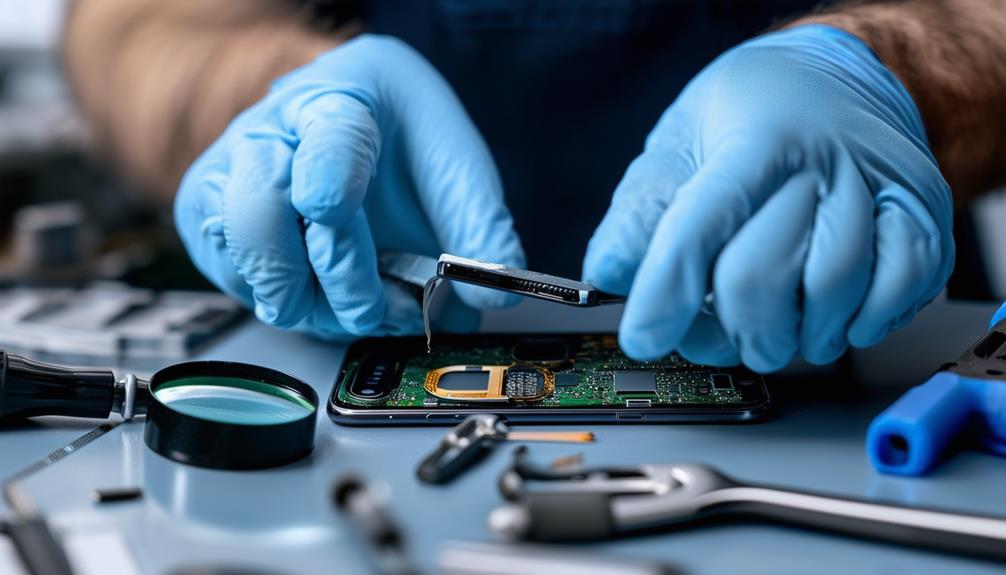
While avoiding environmental factors can help maintain touchscreen responsiveness, there may be occasions when professional assistance is necessary for your Samsung Galaxy S21’s unresponsive screen.
If you’ve exhausted all troubleshooting steps to no avail, it’s time to consult the experts. Certified technicians possess the knowledge and tools to diagnose and rectify hardware-related issues that software solutions can’t address.
Frequently Asked Questions
Why Is My Samsung Screen Not Responding to Touch?
Your Samsung screen’s unresponsiveness could be due to software glitches, physical damage, or incompatible accessories. You’re not alone in experiencing this issue. Try restarting your device, updating the software, or adjusting the touch sensitivity settings to resolve the problem.
Why Is My S21 Touch Screen Not Working?
Experiencing touch screen issues with your S21 can be frustrating, but there’s no need to stress. You’re not alone. Try restarting your phone, enabling touch sensitivity, or removing any accessories. If these steps don’t resolve the issue, we’re here to provide further assistance.
Can You Fix an Unresponsive Touch Screen?
Yes, you can fix an unresponsive touch screen. Start with straightforward solutions like restarting your device or cleaning the screen. If that doesn’t help, try adjusting settings or removing accessories. As a last resort, consider a factory reset.
How Do I Fix My Frozen Samsung S21 Screen?
You’re not alone with a frozen S21 screen. Don’t worry! First, try restarting your phone. If that doesn’t work, clear the cache partition. You can also enable Safe Mode to identify problematic apps. We’re here to help!
Conclusion
You now have several strategies to address touchscreen issues on your Galaxy S21.
If you’ve tried these steps and still encounter problems, don’t hesitate to contact Samsung support or visit an authorised service centre.
It’s always best to address these issues promptly to prevent further complications.
With proper care and maintenance, you’ll be back to enjoying your device’s smooth touchscreen functionality in no time.
Keep these tips handy for future reference.


